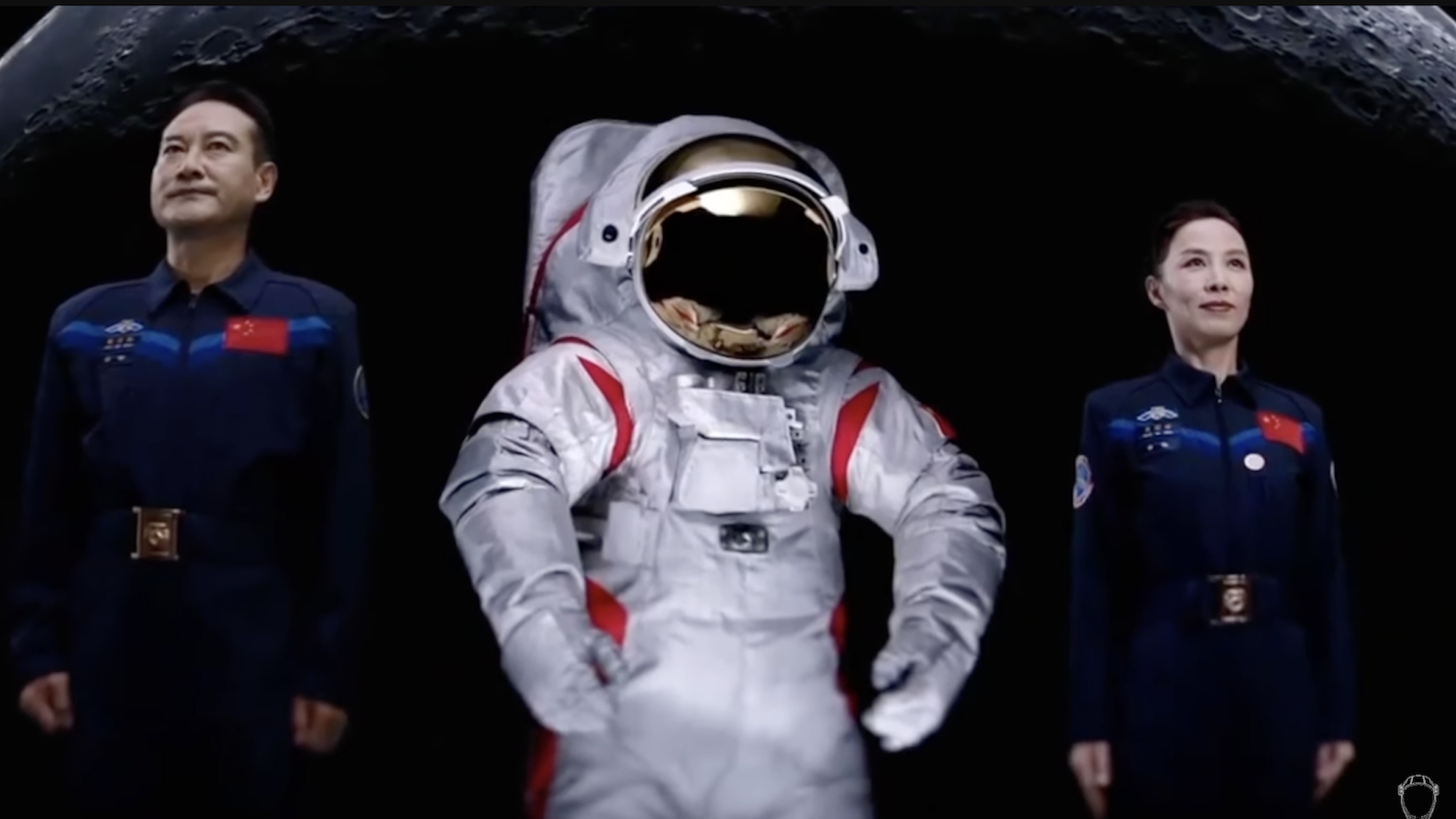While the US remains on track to send humans back to the moon, China isn’t far behind. In fact, the China Manned Space Agency (CMSA) hopes to deliver its own astronauts to the lunar surface before 2030—and they debuted the spacesuit to do it. The name, however, is still up in the air.

As Space News reports, the CMSA revealed their new extravehicular activity (EVA) spacesuit at an event on September 28 in Chongqing, China. Modeled by the country’s second woman in space, Wang Yaping, and fellow astronaut, Zhai Zhigang, the roll out focused almost solely on the suit’s exterior features. In particular, each new suit is considerably slimmer and more lightweight than the CMSA’s Feitian EVA attire used for low Earth orbit, and is covered in a protective fabric to guard against intense temperature swings and lunar dust. They also include a panoramic, anti-glare visor along with both short and long focal length cameras. Unlike their predecessors, the lunar suits will allow for far more flexibility while traversing the moon.

Apart from the practicalities, representatives explained that aesthetics were also important during the design phase. According to CNN, the predominantly white space suits include ribbonlike red stripes on their upper portions inspired by the “flying apsaras,” deities that appear in ancient Chinese art. The more rigid stripes on the legs, meanwhile, are intended to mimic “rocket launch flames,” with CMSA engineering office director Zhang Wanxin telling China’s CCTV that they represent an armor-like, “strong-willed and unswerving” motif. This weekend’s announcement also saw CMSA officials task the nation with helping name the new suits, which will be chosen at an unspecified later date.
Credit: CMSA
[Related: Polaris Dawn astronauts complete historic first commercial spacewalk.]
China recently completed its successful Chang’e-6 mission that saw an uncrewed probe return to Earth with the first-ever samples retrieved from the moon’s far side. The CMSA plans to send additional robotic spacecraft to the lunar south pole in 2026 and 2028 for further resource analysis ahead of the potential establishment of a permanent base. If Chinese astronauts do arrive on the moon by the end of the decade’s end, they will tentatively spend six hours on the surface before returning home.
China isn’t the only country updating their astronaut spacesuits. Last year, NASA revealed its next-generation EVA design courtesy of Axiom Space, while the Polaris Dawn mission’s first-ever commercial spacewalk showcased SpaceX’s latest attire. If all goes as planned, NASA hopes to send its Artemis 3 astronauts on an orbit around the moon no earlier than September 2026—although it’s looking increasingly likely that the launch window will shift back. The same is likely for the Artemis 4 lunar landing, currently scheduled for 2028.
Credit: CMSA

